Ian Tenney
Scalable Influence and Fact Tracing for Large Language Model Pretraining
Oct 22, 2024Abstract:Training data attribution (TDA) methods aim to attribute model outputs back to specific training examples, and the application of these methods to large language model (LLM) outputs could significantly advance model transparency and data curation. However, it has been challenging to date to apply these methods to the full scale of LLM pretraining. In this paper, we refine existing gradient-based methods to work effectively at scale, allowing us to retrieve influential examples for an 8B-parameter language model from a pretraining corpus of over 160B tokens with no need for subsampling or pre-filtering. Our method combines several techniques, including optimizer state correction, a task-specific Hessian approximation, and normalized encodings, which we find to be critical for performance at scale. In quantitative evaluations on a fact tracing task, our method performs best at identifying examples that influence model predictions, but classical, model-agnostic retrieval methods such as BM25 still perform better at finding passages which explicitly contain relevant facts. These results demonstrate a misalignment between factual attribution and causal influence. With increasing model size and training tokens, we find that influence more closely aligns with attribution. Finally, we examine different types of examples identified as influential by our method, finding that while many directly entail a particular fact, others support the same output by reinforcing priors on relation types, common entities, and names.
Interactive Prompt Debugging with Sequence Salience
Apr 11, 2024Abstract:We present Sequence Salience, a visual tool for interactive prompt debugging with input salience methods. Sequence Salience builds on widely used salience methods for text classification and single-token prediction, and extends this to a system tailored for debugging complex LLM prompts. Our system is well-suited for long texts, and expands on previous work by 1) providing controllable aggregation of token-level salience to the word, sentence, or paragraph level, making salience over long inputs tractable; and 2) supporting rapid iteration where practitioners can act on salience results, refine prompts, and run salience on the new output. We include case studies showing how Sequence Salience can help practitioners work with several complex prompting strategies, including few-shot, chain-of-thought, and constitutional principles. Sequence Salience is built on the Learning Interpretability Tool, an open-source platform for ML model visualizations, and code, notebooks, and tutorials are available at http://goo.gle/sequence-salience.
Gemma: Open Models Based on Gemini Research and Technology
Mar 13, 2024



Abstract:This work introduces Gemma, a family of lightweight, state-of-the art open models built from the research and technology used to create Gemini models. Gemma models demonstrate strong performance across academic benchmarks for language understanding, reasoning, and safety. We release two sizes of models (2 billion and 7 billion parameters), and provide both pretrained and fine-tuned checkpoints. Gemma outperforms similarly sized open models on 11 out of 18 text-based tasks, and we present comprehensive evaluations of safety and responsibility aspects of the models, alongside a detailed description of model development. We believe the responsible release of LLMs is critical for improving the safety of frontier models, and for enabling the next wave of LLM innovations.
Gemini 1.5: Unlocking multimodal understanding across millions of tokens of context
Mar 08, 2024Abstract:In this report, we present the latest model of the Gemini family, Gemini 1.5 Pro, a highly compute-efficient multimodal mixture-of-experts model capable of recalling and reasoning over fine-grained information from millions of tokens of context, including multiple long documents and hours of video and audio. Gemini 1.5 Pro achieves near-perfect recall on long-context retrieval tasks across modalities, improves the state-of-the-art in long-document QA, long-video QA and long-context ASR, and matches or surpasses Gemini 1.0 Ultra's state-of-the-art performance across a broad set of benchmarks. Studying the limits of Gemini 1.5 Pro's long-context ability, we find continued improvement in next-token prediction and near-perfect retrieval (>99%) up to at least 10M tokens, a generational leap over existing models such as Claude 2.1 (200k) and GPT-4 Turbo (128k). Finally, we highlight surprising new capabilities of large language models at the frontier; when given a grammar manual for Kalamang, a language with fewer than 200 speakers worldwide, the model learns to translate English to Kalamang at a similar level to a person who learned from the same content.
LLM Comparator: Visual Analytics for Side-by-Side Evaluation of Large Language Models
Feb 16, 2024Abstract:Automatic side-by-side evaluation has emerged as a promising approach to evaluating the quality of responses from large language models (LLMs). However, analyzing the results from this evaluation approach raises scalability and interpretability challenges. In this paper, we present LLM Comparator, a novel visual analytics tool for interactively analyzing results from automatic side-by-side evaluation. The tool supports interactive workflows for users to understand when and why a model performs better or worse than a baseline model, and how the responses from two models are qualitatively different. We iteratively designed and developed the tool by closely working with researchers and engineers at a large technology company. This paper details the user challenges we identified, the design and development of the tool, and an observational study with participants who regularly evaluate their models.
Gemini: A Family of Highly Capable Multimodal Models
Dec 19, 2023Abstract:This report introduces a new family of multimodal models, Gemini, that exhibit remarkable capabilities across image, audio, video, and text understanding. The Gemini family consists of Ultra, Pro, and Nano sizes, suitable for applications ranging from complex reasoning tasks to on-device memory-constrained use-cases. Evaluation on a broad range of benchmarks shows that our most-capable Gemini Ultra model advances the state of the art in 30 of 32 of these benchmarks - notably being the first model to achieve human-expert performance on the well-studied exam benchmark MMLU, and improving the state of the art in every one of the 20 multimodal benchmarks we examined. We believe that the new capabilities of Gemini models in cross-modal reasoning and language understanding will enable a wide variety of use cases and we discuss our approach toward deploying them responsibly to users.
Simfluence: Modeling the Influence of Individual Training Examples by Simulating Training Runs
Mar 14, 2023Abstract:Training data attribution (TDA) methods offer to trace a model's prediction on any given example back to specific influential training examples. Existing approaches do so by assigning a scalar influence score to each training example, under a simplifying assumption that influence is additive. But in reality, we observe that training examples interact in highly non-additive ways due to factors such as inter-example redundancy, training order, and curriculum learning effects. To study such interactions, we propose Simfluence, a new paradigm for TDA where the goal is not to produce a single influence score per example, but instead a training run simulator: the user asks, ``If my model had trained on example $z_1$, then $z_2$, ..., then $z_n$, how would it behave on $z_{test}$?''; the simulator should then output a simulated training run, which is a time series predicting the loss on $z_{test}$ at every step of the simulated run. This enables users to answer counterfactual questions about what their model would have learned under different training curricula, and to directly see where in training that learning would occur. We present a simulator, Simfluence-Linear, that captures non-additive interactions and is often able to predict the spiky trajectory of individual example losses with surprising fidelity. Furthermore, we show that existing TDA methods such as TracIn and influence functions can be viewed as special cases of Simfluence-Linear. This enables us to directly compare methods in terms of their simulation accuracy, subsuming several prior TDA approaches to evaluation. In experiments on large language model (LLM) fine-tuning, we show that our method predicts loss trajectories with much higher accuracy than existing TDA methods (doubling Spearman's correlation and reducing mean-squared error by 75%) across several tasks, models, and training methods.
Tracing Knowledge in Language Models Back to the Training Data
May 24, 2022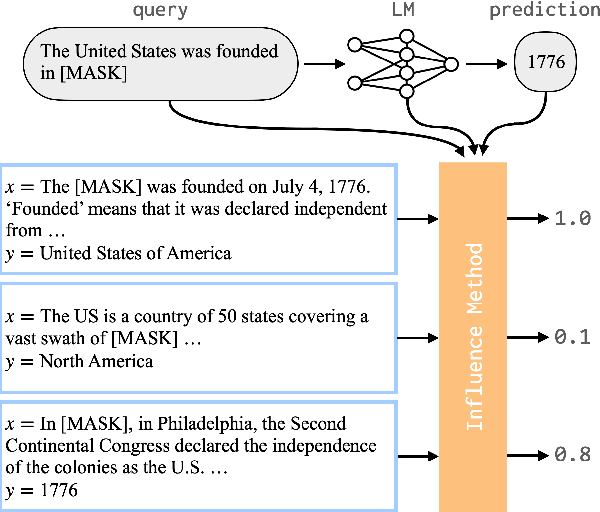
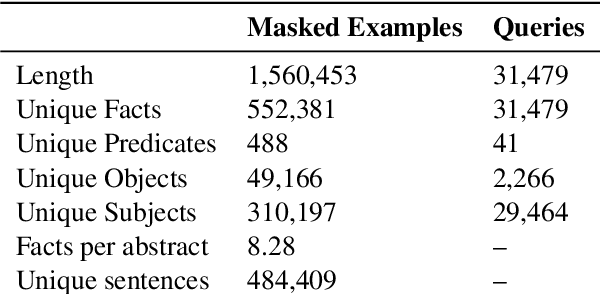
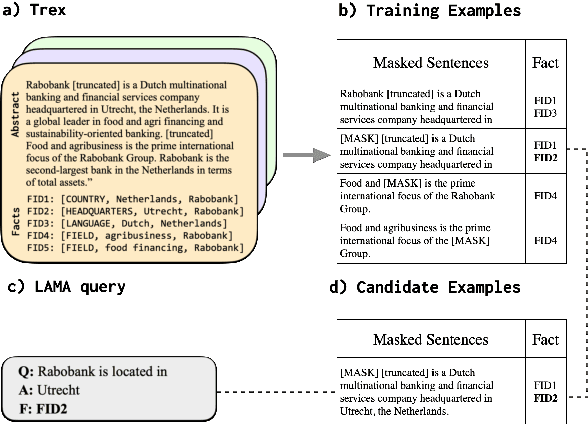

Abstract:Neural language models (LMs) have been shown to memorize a great deal of factual knowledge. But when an LM generates an assertion, it is often difficult to determine where it learned this information and whether it is true. In this paper, we introduce a new benchmark for fact tracing: tracing language models' assertions back to the training examples that provided evidence for those predictions. Prior work has suggested that dataset-level influence methods might offer an effective framework for tracing predictions back to training data. However, such methods have not been evaluated for fact tracing, and researchers primarily have studied them through qualitative analysis or as a data cleaning technique for classification/regression tasks. We present the first experiments that evaluate influence methods for fact tracing, using well-understood information retrieval (IR) metrics. We compare two popular families of influence methods -- gradient-based and embedding-based -- and show that neither can fact-trace reliably; indeed, both methods fail to outperform an IR baseline (BM25) that does not even access the LM. We explore why this occurs (e.g., gradient saturation) and demonstrate that existing influence methods must be improved significantly before they can reliably attribute factual predictions in LMs.
Retrieval-guided Counterfactual Generation for QA
Oct 14, 2021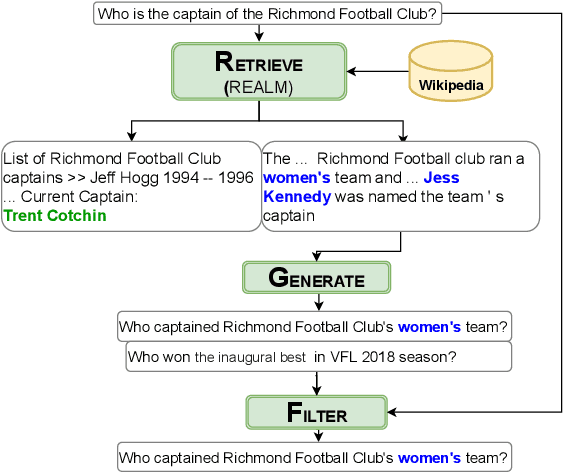
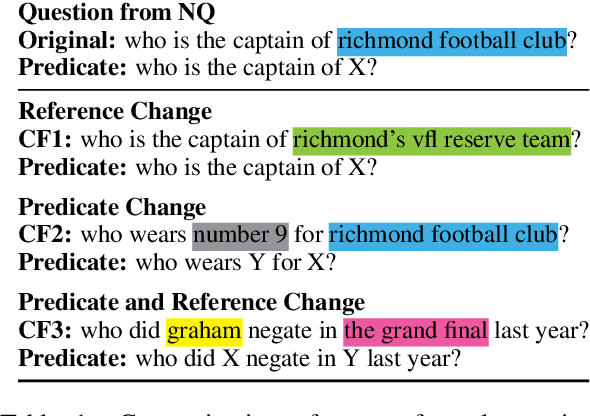


Abstract:Deep NLP models have been shown to learn spurious correlations, leaving them brittle to input perturbations. Recent work has shown that counterfactual or contrastive data -- i.e. minimally perturbed inputs -- can reveal these weaknesses, and that data augmentation using counterfactuals can help ameliorate them. Proposed techniques for generating counterfactuals rely on human annotations, perturbations based on simple heuristics, and meaning representation frameworks. We focus on the task of creating counterfactuals for question answering, which presents unique challenges related to world knowledge, semantic diversity, and answerability. To address these challenges, we develop a Retrieve-Generate-Filter(RGF) technique to create counterfactual evaluation and training data with minimal human supervision. Using an open-domain QA framework and question generation model trained on original task data, we create counterfactuals that are fluent, semantically diverse, and automatically labeled. Data augmentation with RGF counterfactuals improves performance on out-of-domain and challenging evaluation sets over and above existing methods, in both the reading comprehension and open-domain QA settings. Moreover, we find that RGF data leads to significant improvements in a model's robustness to local perturbations.
The MultiBERTs: BERT Reproductions for Robustness Analysis
Jun 30, 2021
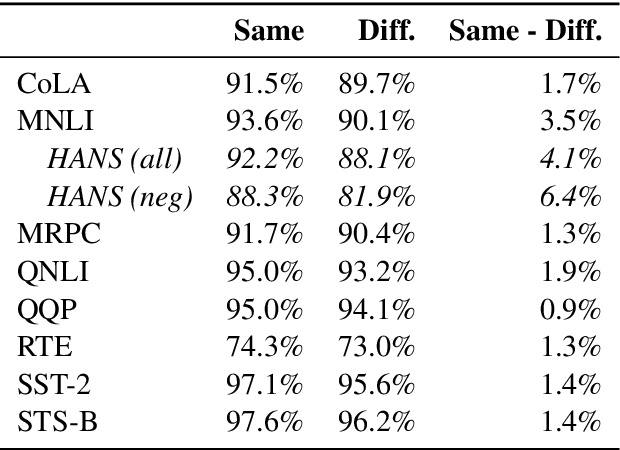
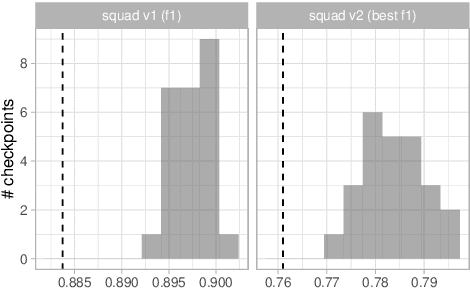
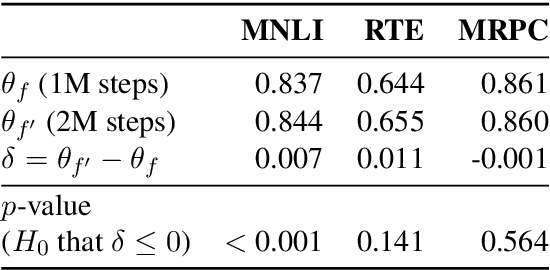
Abstract:Experiments with pretrained models such as BERT are often based on a single checkpoint. While the conclusions drawn apply to the artifact (i.e., the particular instance of the model), it is not always clear whether they hold for the more general procedure (which includes the model architecture, training data, initialization scheme, and loss function). Recent work has shown that re-running pretraining can lead to substantially different conclusions about performance, suggesting that alternative evaluations are needed to make principled statements about procedures. To address this question, we introduce MultiBERTs: a set of 25 BERT-base checkpoints, trained with similar hyper-parameters as the original BERT model but differing in random initialization and data shuffling. The aim is to enable researchers to draw robust and statistically justified conclusions about pretraining procedures. The full release includes 25 fully trained checkpoints, as well as statistical guidelines and a code library implementing our recommended hypothesis testing methods. Finally, for five of these models we release a set of 28 intermediate checkpoints in order to support research on learning dynamics.
 Add to Chrome
Add to Chrome Add to Firefox
Add to Firefox Add to Edge
Add to Edge